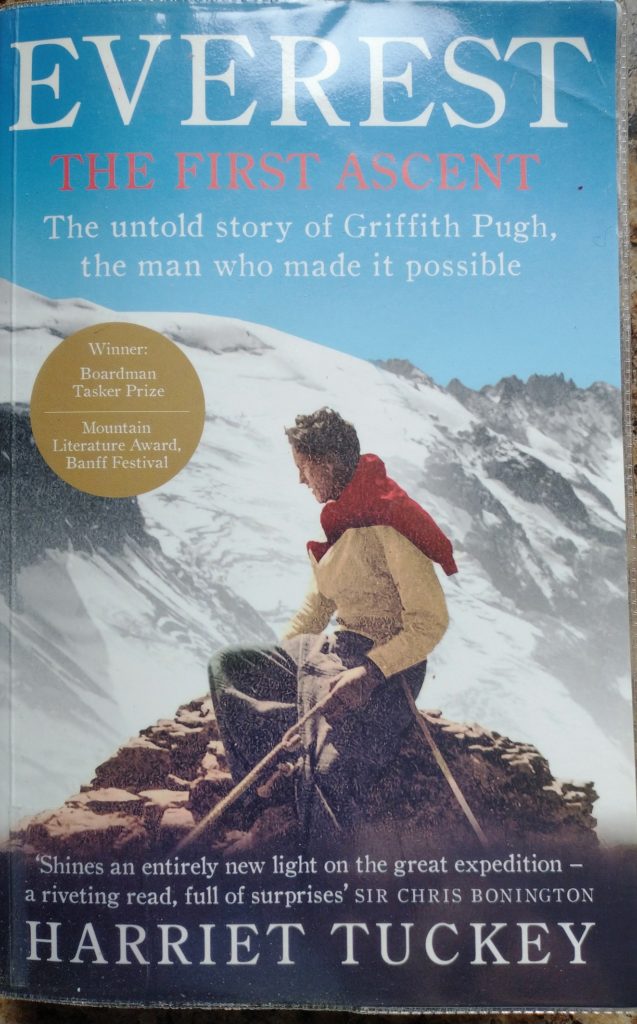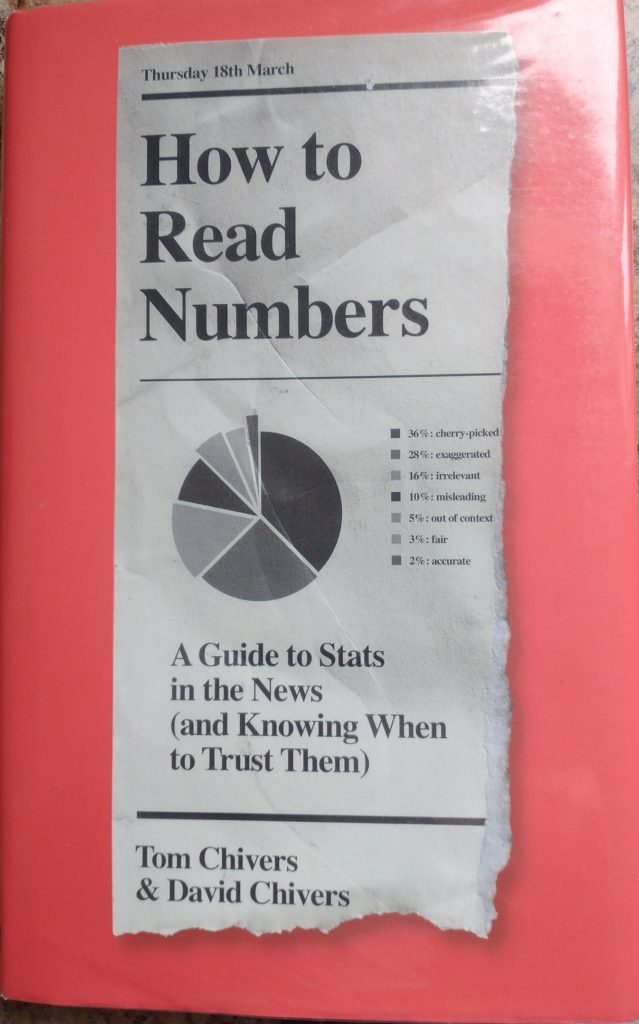Main Menu
Latest Blog Entry
User login
Two good books for the sports scientist/ sports coach/ interested reader.
Good books about sports science and statistics are as rare as rocking horse dung. I have read two, back to back, that were both readable and informative: ‘Everest’ by Harriet Tuckey and ‘How to Read Numbers’ by Tom Chivers and David Chivers.
One of the problems with sports science is that it has disappeared down a cul-de-sac of its own making whereby a combination of desperation to ‘Publish or Perish’ and bad writing makes relevant and accessible information beyond the reach of the people who need it the most: the sports coach.
This results in thousands of research papers being unread and coaches abdicating any form of ‘fitness -training’ to a crew of eager but inexperienced undergraduates who lack ‘context.’ This might involve fitness testing players and disappearing with the results or inflicting gym training sessions that are easy to measure but have little to no transfer to the competitive arena.
I am talking about the 95% of the sporting world, not the rarefied atmosphere of Olympic and top-flight professional sport. Both of the books that I have summarised below offer insights into how communication and understanding can be improved between coaches, athletes and support staff.
Everest: The First Ascent by Harriet Tuckey
I can’t remember who recommended this to me but I am glad that I made a note of it. It is the detailed account of the work done by Griffith Pugh, a Royal Army Medical Corps (RAMC) Doctor turned physiologist.
The headline is his work supporting and leading the first successful climb of Mount Everest in 1953. I have no interest in mountaineering as a sport but found this fascinating. The author is Pugh’s daughter and she gives a warts and all account of how Pugh was both thorough, insightful and driven, as well as irritable, aloof and absent-minded.
The book covers part of Pugh’s war efforts helping develop Mountain Warfare equipment and training programmes prior to his Everest expeditions. It then shows how his research helped with:
- Cold water survival strategies (Royal Air Force).
- Altitude training and acclimatisation (Mexico Olympics).
- Heat exhaustion (endurance runners).
- Hypothermia and exposure (Duke of Edinburgh award scheme).
All of the above still use protocols developed and suggested by Pugh decades ago,
Pugh’s work as a researcher (not as an overall human being) should be recognised and posted in mind for all scientists working to support others. Sir Arnold Burgen said of Pugh,
‘He has an extraordinary facility for dealing with quite fundamental matters of human physiology in simple terms, applying general physics to them and working them out with little in the way of specialised equipment.’
This all might sound a bit dry and geeky but Tucker brings the man to life and adds her own personal feelings that shed a spotlight on this ‘restless sharpshooter’.
Thoroughly entertaining and enlightening.
How to Read Numbers: A Guide to Stats in the News (and knowing when to trust them) by Tom Chivers & David Chivers.
Don’t panic: this is a book of words with just a few numbers. One of the problems with interpreting ‘science’ is understanding how statistics work. The COVID Pandemic has resulted in a deluge of numbers that threaten to drown us: we either sink or swim to safer, more familiar, shores and allow others to give us a summary.
This is partly due to bad writing and partly due to deliberate ‘massaging’ of the stats to suit a pre-determined narrative. I have got an ‘O’ level in Stats, did Stats in ‘A’-level maths and did a module on research methods (taught atrociously) in my MSc. I still find it hard to understand what is being written.
In 22 succinct chapters, the authors summarise, explain and illustrate the most common statistical methods and flaws that we are likely to encounter. It is eminently readable and enjoyable. It is a classic example of true experts understanding that, ‘You haven’t taught until they have learned.’
I learned a lot.
I couldn’t put the book down (a sentence I never thought that I would apply to a stats guide).
One chapter covers ‘Goodhart’s law’; ‘When a measure becomes a target, it ceases to be a good measure.’
I have seen countless physical measures become targets for poor athletes suffering at the hands of an ‘S&C coach’ or researcher. Often done without the sports coach intervening because they have been bamboozled by numbers and pseudoscience.
Sports coaches: do yourself a favour and buy a copy (or borrow from the library) of this book and start questioning the methods used by support staff.
‘When reading about (or reporting on) targets, metrics and statistics, remember that they’re proxies for the thing we care about, not the thing itself.’
British Fencing once told all its fencers that in order to represent GB they would have to be able to do a side plank for 90 seconds! An example of a measure becoming a target!
Years ago, I saw Jack Blatherwick tear apart the research papers linking weight lifting to 10m sprint performance. The researchers had amalgamated different gender/ age groups and drawn a regression line through the data. They had eliminated the confounding variables that might also affect sprint performance: men run faster than women and adults run faster than teenagers (on average).
Thanks to this book, I can now see what was happening and draw a critical eye on research papers (Dr Robin Williams wrote about dodgy sports science stats ).
I have added this book to my ‘Recommended reading for teachers and coaches’ list. It is a worthwhile investment to help you get a better understanding of how important numbers are in our everyday lives.
Client Testimonials
 Vern Gambetta: GAIN founder
Vern Gambetta: GAIN founder
James Marshall is the consummate professional, always learning and working to make himself better. His focus is always on the athletes he working to make them better by exploring and discovering the dimensions of movement. He is a longtime active member of the GAIN professional development network. This gives him access to other professionals around […]
More




